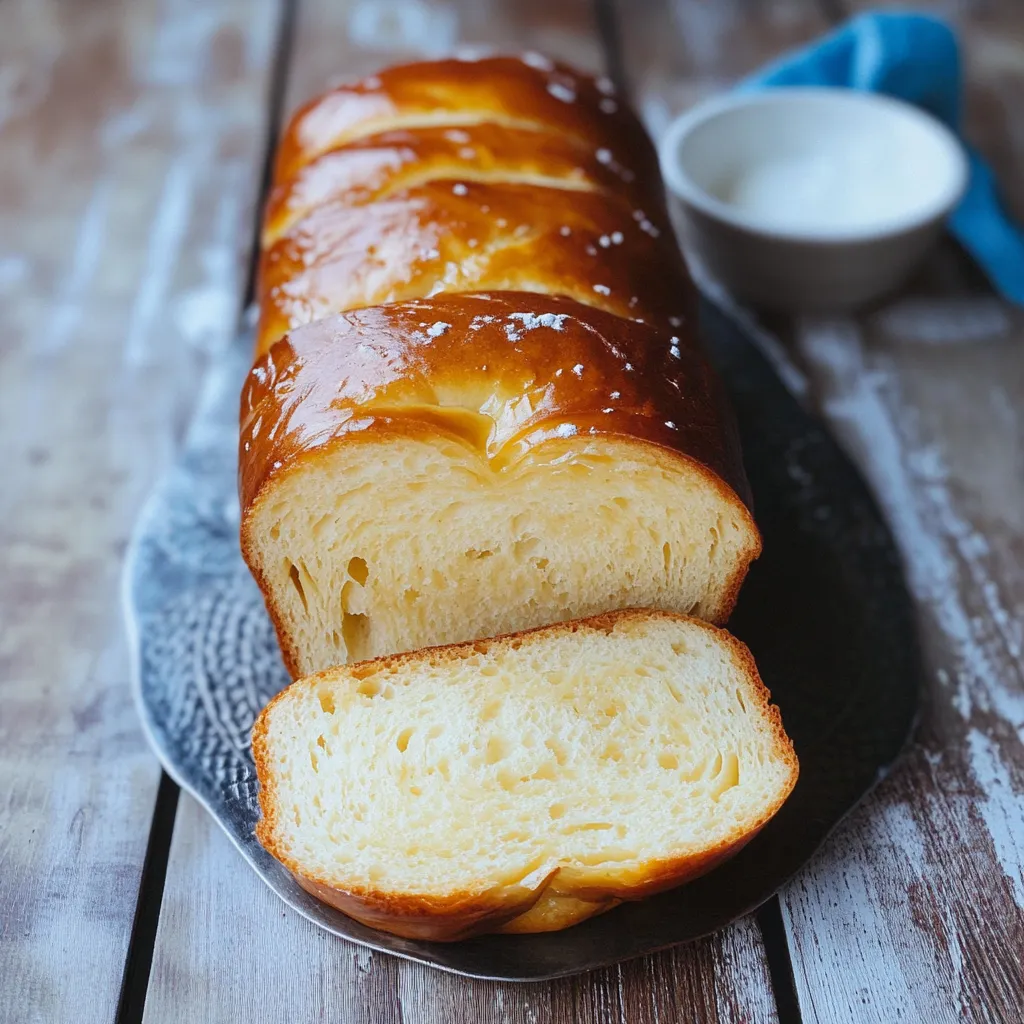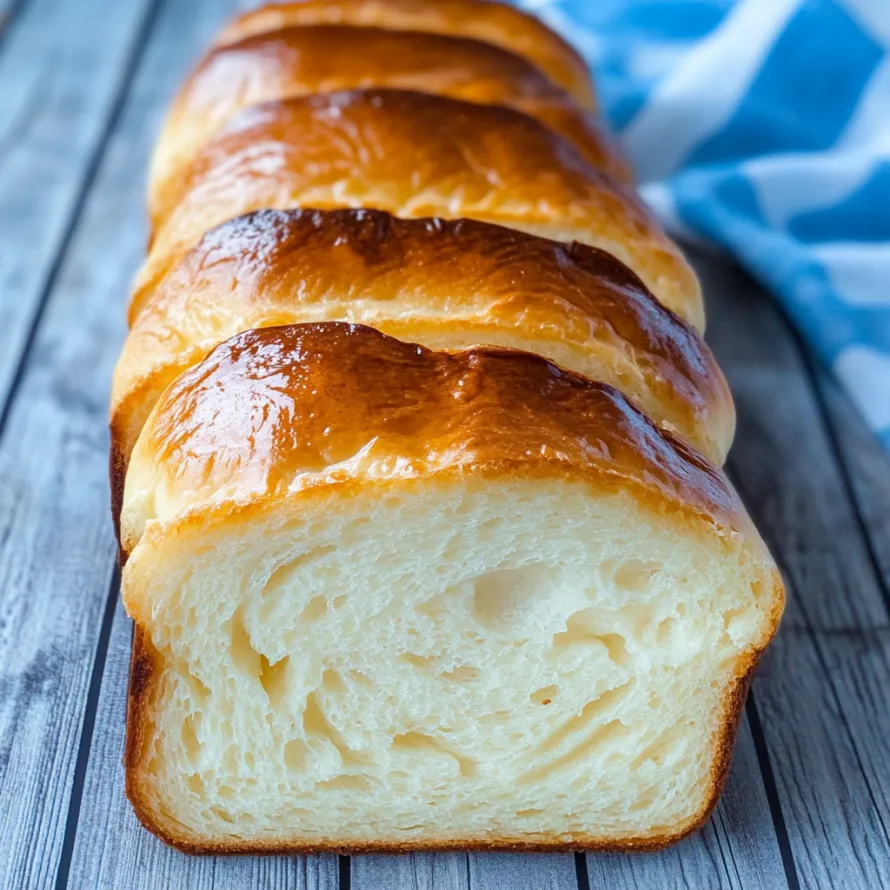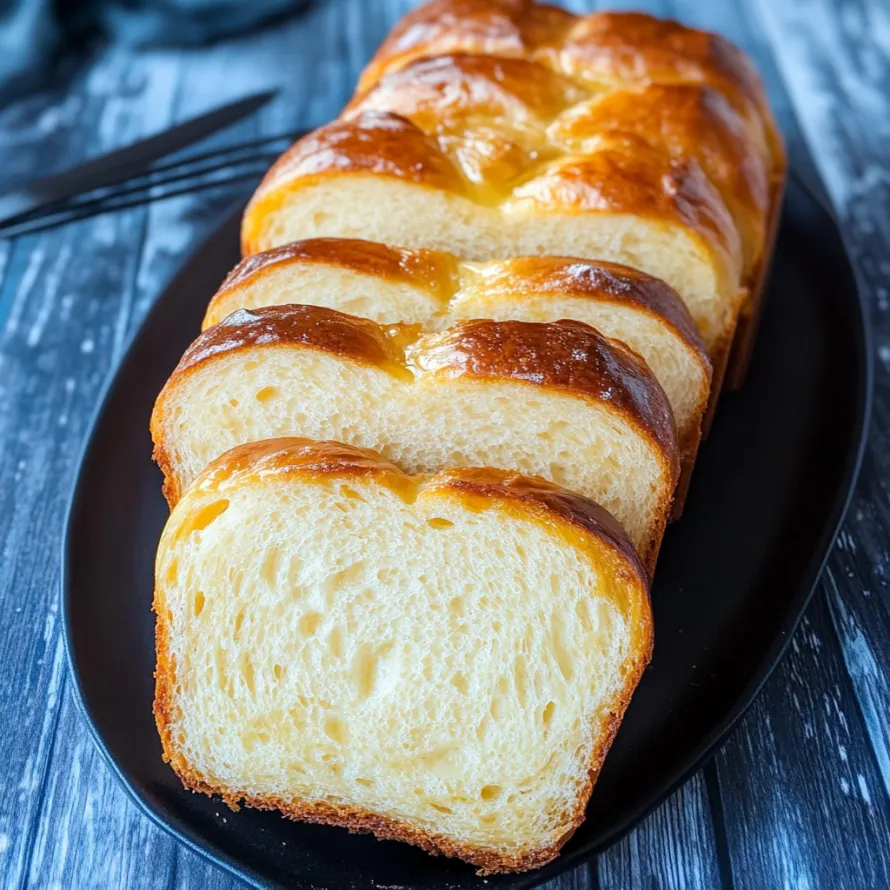 Pin
Pin
Fluffy condensed milk bread turns basic items into a stunning loaf with a feather-light feel and gentle sweetness that stays with you after each bite. The smooth inside pulls into soft strands while the crispy golden outside gives just the right amount of crunch for a perfect mouthful. It works as both a daily sandwich bread and a fancy treat, making it great for everything from your morning toast to fancy finger sandwiches.
I first tried making condensed milk bread during a stormy weekend when I wanted something fancy but doable. When I took that golden loaf out of my oven, my kitchen filled with this amazing buttery smell that had my whole family running in to see what was happening. After one taste of that cloud-like bread, I knew right away it would become our go-to homemade bread - fancy enough for company but easy enough to make regularly.
Quality Ingredients Count
- Sweetened condensed milk: Adds that special flavor and makes everything softer thanks to its milk proteins and sugars
- Cake flour: Makes a much smoother texture though regular flour works too with a slightly different feel
- Whole milk: Adds the right amount of wetness and fat you need for the dough to work properly
- Unsalted butter: Lets you control exactly how salty your bread is while adding richness
- Instant yeast: Gives you dependable rising without the extra steps other yeasts need
- Egg wash: Makes that beautiful golden shine and helps toppings stick better
Stellar Bread Preparation
- Getting Started:
- First, warm up your whole milk to about 100°F, which gives yeast the perfect temperature to work without killing it. Mix your condensed milk into the warm milk until it's all blended together. In another big bowl, mix cake flour, salt, sugar and instant yeast so everything's spread out evenly. Make a hole in the middle of your dry stuff and pour the milk mixture in there. Start mixing with a wooden spoon until you get a rough-looking dough that picks up most of the dry ingredients.
- Building Good Texture:
- Move your partly mixed dough to a lightly floured counter or use a mixer with a dough hook. Start kneading by pushing the dough forward then folding it back toward you over and over. Keep this up for about ten minutes until your dough feels smooth and stretchy. Add your room temperature butter bit by bit, making sure each piece mixes in completely before adding more. When your dough is ready, it should stretch into a thin film without breaking when you pull it between your fingers, making what bakers call a "windowpane."
- First Rise Time:
- Shape your kneaded dough into a tight ball by tucking the edges underneath to make the top smooth. Put it in a lightly oiled bowl, flip it once so all sides get oiled which stops dry spots while rising. Cover the bowl with plastic wrap or a damp kitchen towel and put it somewhere warm with no drafts. Let the dough double in size, which takes about 60 to 90 minutes depending on how warm your kitchen is. You'll know it's ready when you poke it gently and the dent stays there.
- Forming Your Bread:
- Gently press down on the risen dough with your flat hands to remove air bubbles, then move it to a clean counter. Cut the dough into equal pieces using a bench scraper or sharp knife. Form each piece into a tight ball by creating tension across the top. Roll each ball into a tube about eight inches long before putting them in your prepared bread pan. Place the tubes with their cut sides facing the pan sides to make your bread look nice when baked.
- Second Rise:
- Cover your shaped dough loosely with plastic wrap or a clean kitchen towel and put it somewhere warm for its second rise. Let the dough grow until it almost reaches the top of your bread pan, about 45 to 60 minutes. You can tell it's ready when you press it lightly with your finger and it slowly springs back. While you're waiting for this final rise, heat your oven to 350°F so it's good and hot before baking time.
- Perfect Baking:
- Mix an egg with a tablespoon of water to make your egg wash. Gently brush this over your risen dough with a soft pastry brush, being careful not to press too hard which could flatten your nicely risen dough. Bake in your preheated oven for about 35 minutes, turning the pan halfway through so it browns evenly. Your bread is done when it sounds hollow when you tap the bottom and shows 190°F on an instant read thermometer.

The very first time my grandma showed me condensed milk, she taught me how this one simple thing could turn ordinary food into something special. She would spread just a little bit on toast or drizzle some over fresh fruit, treating it like a treasure because it was so hard to get during wartime when she was little. When I was working on this bread, I wanted to capture that same magic, letting condensed milk turn basic bread into something you'd remember without going overboard.
Delicious Pairings
Try eating slightly warm pieces with some fresh berry sauce for a breakfast treat that balances the sweet bread with tangy fruit. You can also make thin sandwiches using cream cheese and cucumber for a fancy afternoon snack. Or toast thick slices until golden and top with cinnamon butter for an easy dessert that doesn't take much work but tastes amazing.
Tasty Twists
Try mixing in dried cranberries and orange zest before shaping for a holiday breakfast version. You can also add a tablespoon of matcha powder to your dry ingredients for a mild green tea flavor that looks cool too. Another option is making individual rolls instead of a whole loaf, which only need about 20 minutes to bake and give you perfect serving sizes.
Keeping It Fresh
Keep your completely cooled bread in a sealed container or plastic bag at room temperature for up to three days to maintain its soft texture. You can bring slightly stale bread back to life by warming it briefly in a 300°F oven for about five minutes, which makes it tender again without drying out the edges. Don't put your bread away until it's totally cool or you'll get moisture buildup that makes the crust soggy and ruins that nice crispy outside.

My experience with this condensed milk bread reminds me that baking isn't just about following steps but about creating something that connects people across generations through shared tastes. The process takes some patience and care but rewards you with amazing smells in your kitchen and a special texture you won't find in store-bought bread. Whether you're making this bread for family or friends, its unique character starts conversations while its versatility means plates always end up empty. The gentle sweetness and amazing texture show how simple ingredients can be turned into something truly special through careful handling.
Recipe Q&A
- → Can I switch out cake flour for all-purpose flour?
- Absolutely! Just remove 2 tablespoons of all-purpose flour per cup and replace with 2 tablespoons of cornstarch to ensure a lighter texture.
- → How long will the bread stay soft?
- It stays fresh for around 3 days if you wrap it well in plastic and keep it in a cool, dry spot at room temperature.
- → What’s the purpose of two separate proofing stages?
- Two proofings are critical. The first creates those nice air bubbles for softness, and the second, after shaping, ensures the final texture comes out just right.
- → Can I freeze this bread for later?
- Totally! Wrap it tightly in plastic first, then in foil before placing it in the freezer. Let it thaw at room temperature when you're ready to enjoy.
- → Why does this bread turn out so soft and fluffy?
- Sweetened condensed milk, together with eggs and butter, creates an enriched dough that bakes up wonderfully light and tender.
